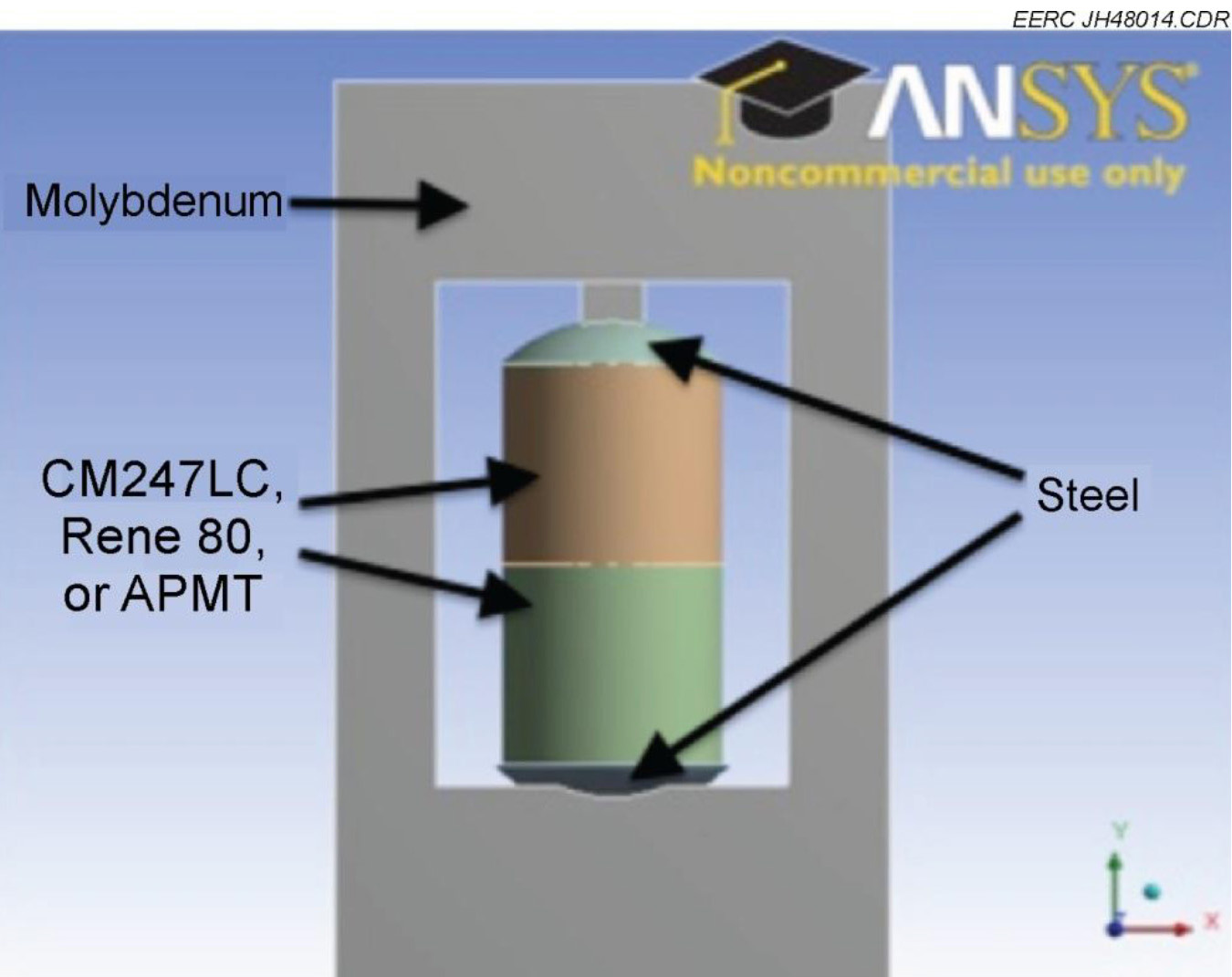This University of North Dakota project is designed to refine the evaporative metal bonding (EMB) method, then apply the refinements to bonding a layer of corrosion- and spallation-resistant alloy, advanced powder metallurgy technology (APMT) to turbine parts composed of two nickel superalloy compositions and test the parts to determine if lifetimes have been increased. The work involves measurement of the temperature-dependent diffusion rates of zinc, the bonding metal used in the EMB process. The component superalloys of interest are CM247LC®, and Rene 80. The corrosion and spallation resistant super alloy layer is APMT. This information will help the University of North Dakota Energy & Environmental Research Center (EERC)-led project team better design the heat treatments needed to create the bonds between the super-alloys and the APMT plating and assure that the zinc completely diffuses out of the turbine components created. The team will also model force distributions in the clamped structures being plated with APMT to assure that the compressive force used to hold the APMT and superalloys together during bonding is adequately distributed over the surfaces being joined. This modeling capability will allow the team to better design the clamping fixtures and force distribution plates (buffers) that will be used to bond plates of the APMT to more complex superalloy turbine parts.
To determine the appropriate conditions for corrosion testing of the bonded parts in simulated turbine conditions, the team will measure trace constituents in combusted syngas produced in the EERC entrained-flow gasifier. This will consist of combusting a slipstream of cleaned coal derived synthesis gas (syngas) produced from the gasifier, quenching the combusted gas with nitrogen, and collecting the submicron particulates on Nuclepore surface filters and gaseous constituents in activated carbon, zeolite traps, or gas impingers. After determining the best heat treatment and clamping methods, the team will bond plates of APMT to the surface of superalloy test samples (buttons) and turbine parts provided by Siemens. Siemens will also apply thermal barrier coatings (TBCs) to some of the bonded parts and evaluate them. The EERC will perform laboratory hot corrosion tests simulating post-combustor turbine gas compositions, including relevant trace species defined in pilot-scale testing used to bond plates of the APMT to more complex superalloy turbine parts.
Principal Investigator
John Hurley
jhurley@eerc.und.nodak.edu
Project Benefits
This project is designed to refine the evaporative metal bonding (EMB) method and determine if it results in increased lifetimes. Turbine materials research seeks to improve coating materials that will allow for higher temperature operation and increased durability leading to increased turbine efficiency and reduced maintenance. Specifically, this project will measure the diffusion rates of zinc, design heat treatments for bonding to CM247LC and Rene 80 superalloys, bond the corrosion and spallation resistant alloy to the substrates, and test them to determine if the improved process and modeling increases part lifetimes.
Website
University of North Dakota
http://www.undeerc.org/




